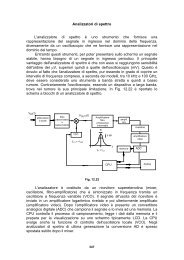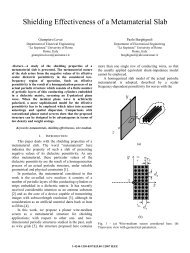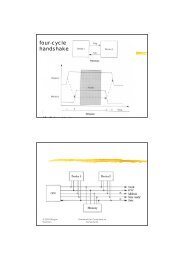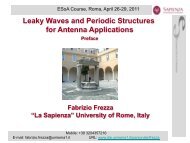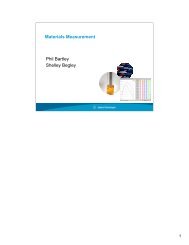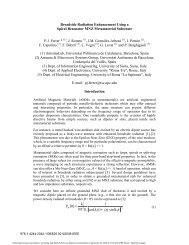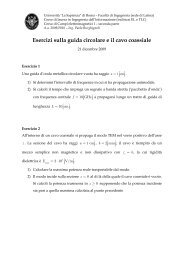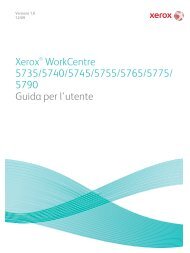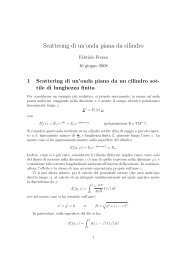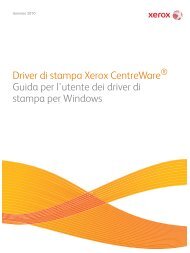Introduction to Traveling-Wave antennas.pdf
Introduction to Traveling-Wave antennas.pdf
Introduction to Traveling-Wave antennas.pdf
Create successful ePaper yourself
Turn your PDF publications into a flip-book with our unique Google optimized e-Paper software.
8 <strong>Introduction</strong> <strong>to</strong> TWAFigure 9: Effect of the stub width on the phase and the attenuation constantsAn analysis of the antenna behavior indicates that this geometry effectively permitsindependent control of the angle of maximum radiation θ m and the beamwidth ∆θ.Let us define two geometric parameters: the relative average arm length bm whereab m = b l+b r, and the relative unbalance ∆b2 b m, where ∆b = b l−b r.2Figure 10: Ridge guide.It then turns out that by changing bm aone can adjust the value of withoutaltering α k omuch and that by changing ∆bb mone can vary α k oover a large range withoutaffecting β k omuch. The taper design for controlling the sidelobe level would thereforeinvolve only the relative unbalance ∆bb m. The transverse equivalent network is slightlycomplicated by the presence of two additional changes in height of the waveguide,which can be modeled by means of shunt susceptances and ideal transformer. Theideal transformer accounts for the change in the characteristic impedance, while thes<strong>to</strong>ring of reactive energy is taken in<strong>to</strong> account through the susceptance.Scanning arrays achieve scanning in two dimensions by creating a one-dimensionalphased array of leaky-wave line-source <strong>antennas</strong>. The individual line sources areβk oEuropean School of Antennas




